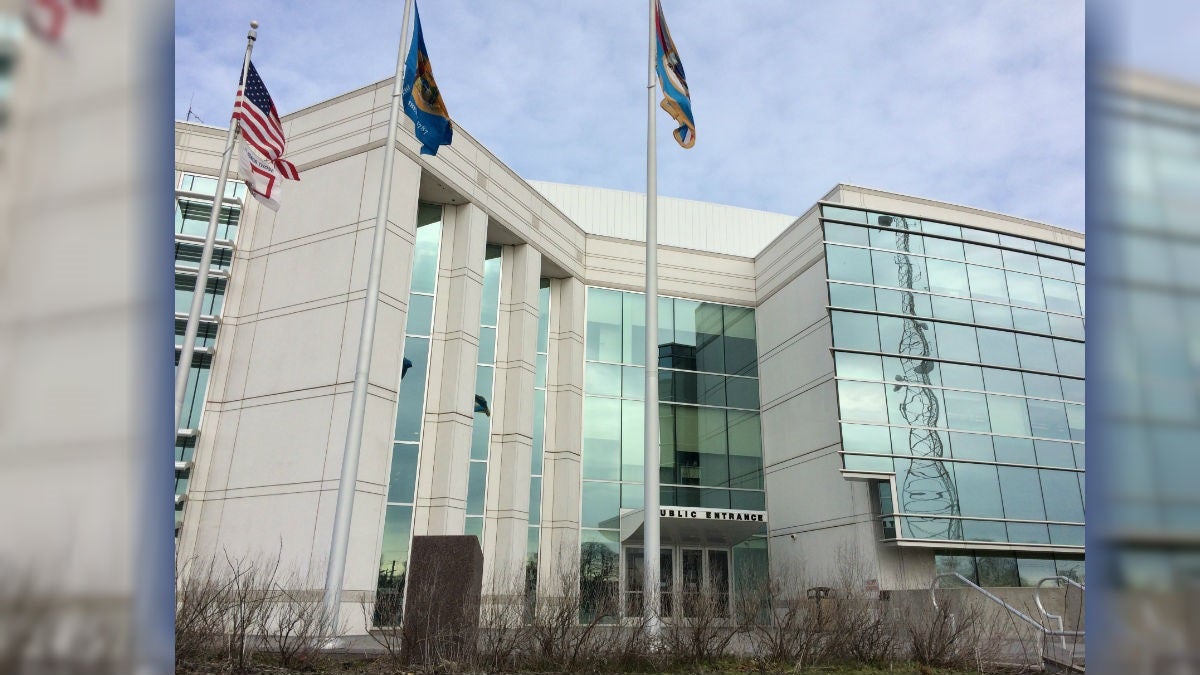New policing model credited with drop in NCCo crime numbers

New Castle County Police Headquarters (Shirley Min/WHYY)
Since implementing the Targeted Analytic Policing System (TAPS) three years ago, New Castle County’s police chief announced a double-digit decline in crime.
Col. Elmer Setting said TAPS’ three-year results show a 22.2 percent drop in overall crime in New Castle County.
Robberies led the pack with a 38 percent drop since 2013, when the program was first put in place, followed by a 32.9 percent decrease in burglaries. Shootings fell 29.4 percent; homicide numbers went down 13.2 percent.
The initiative capitalizes on technology and what’s called “predictive policing,” which places officers in targeted high crime areas where they address more than just serious crimes like robberies, assaults and murders.
In a media briefing Tuesday morning, Setting said by addressing often overlooked “quality of life” crimes, like loud radios or people loitering on the street, officers can prevent them from becoming more serious crimes.
“The areas that had the exact same amount of quality of life crime, are the exact same areas where we had the most homicides, the most shootings, the most of all crime,” Setting said.
For example, neighborhoods like Sparrow Run and Edgemoor Gardens, he pointed out, were hotbeds of quality of life crime for decades. They were also where the county had the most murders, shootings and robberies.
“The area was just a powder keg,” Setting said. “By putting resources in there, through special operations, the mobile enforcement teams with a sergeant and five aggressive officers focused on quality of life crime … and now in the three years we’ve been running this program, we have zero homicides in that area.”
Setting recalled one case where officers came across a man who was urinating outside of his home. Pre-TAPS, Setting said officers would’ve driven by him to respond to a more serious call, like a car accident, for example. But in this model, officers stopped the man.
“The reason he’s urinating outside his home, instead of inside his home, is he’s a drug dealer and he can’t go in the house. He’s waiting for his next sale,” Setting said. “He had approximately $8,000 in his pocket, a drug store in his other pocket and a loaded .45 in his waistband. Someone is going to come up and attempt to rob him and it’s going to come down to who can get that gun out first. And by dealing with him at the point where he’s breaking the law urinating outside at 5:00, we avoided a homicide at 7:00 p.m.”
The initial costs of buying the computers and software, along with maintenance fees, pales in comparison, Setting said, to the costs tied to a homicide investigation for example.
“The cost of bodies dropping on the cement versus the cost of not dropping on the cement is significant,” said Setting, who cited national statistics that price murder investigations from the moment it’s called in to trial at millions of dollars.
WHYY is your source for fact-based, in-depth journalism and information. As a nonprofit organization, we rely on financial support from readers like you. Please give today.


